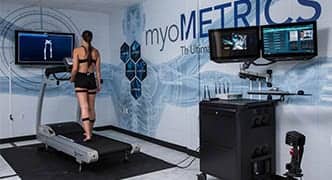
Kennedy I. Hawkins
Rehab Management (RM) recently had the opportunity to ask Kennedy I. Hawkins, MBA, JD, LLM, president and general manager of PT Northwest, Salem, Ore, about the overall experience of purchasing and installing an integrated software system for the rehab practice.
RM: Tell us about PT Northwest. Where are your locations? How many clinicians work for the facility?
Kennedy I. Hawkins: PT Northwest is a diverse physical rehabilitation group that has served Oregon’s Willamette Valley for more than 30 years. We provide physical, occupational, and speech therapy along with athletic training services through our eight outpatient clinics. In addition, we service a hospital in a rural area, minor league sports teams, high schools, and universities.
RM: When did you decide to implement a new integrated software system in your rehab practice? Were you looking to improve, replace, or implement new features to an existing system?
Hawkins: In the ’90s, we developed our own documentation system. It worked well for a time. As our group grew, we knew we needed a more robust system that could integrate our scheduling, documentation, and billing functions. We wanted to have the ability to look at every aspect of our practice group in “real time.” After an exhaustive search in 2004, we [settled on a company] to handle our integrated software needs.
RM: What were the most important elements you considered when you were shopping for an integrated software system? What are the features of your current software system?
Hawkins: There were several elements that were important to us. First, we wanted a truly integrated software system. We wanted one database to handle our scheduling, documentation, and billing. It is only with a truly integrated software system that you realize tremendous efficiency gains. Second, we had to believe in the software company’s vision. Did they have a clear understanding of the needs of physical rehab providers and where health care was going? Third, we needed to know that our software company would stand behind their product. If we had a problem, we wanted to know that we would have access to the company’s CEO if there were an issue that could not be resolved through the normal channels.
Our current system has features that should be in any good integrated software package. Those features are scheduling, clinical documentation, billing/collection, and clinical and business reporting. We can access our database at any time from any computer.
RM: How long was the installation process?
Hawkins: Installation occurred over a 2-week period.
RM: How long was the training process?
Hawkins: The initial training process occurred over a period that was 2 weeks to 4 weeks.
RM: What was the staff’s overall experience transitioning to this system? Were there any major hurdles (such as replacing equipment, laptops, or wireless issues)?
Hawkins: A lot of people struggle with change especially in the area of technology. One of the lessons our group learned was to build plenty of lead time into the transition process. I would allow 6 months to 12 months for people to feel completely comfortable with a new software system. You may achieve those results quicker, but I would definitely set realistic expectations. I would also recommend identifying “technology” champions. These are individuals who can adopt technology quickly. Those individuals can then help others in your company who may struggle with “embracing technology.”
In terms of major hurdles, you will need quality laptops and a technical support company to maintain them. Reliable broadband access is crucial as well. Most will run wireless networks in their locations. You will need to be sure those networks are encrypted to the latest industry standards.
RM: Has there been a vast improvement in the timeliness and accuracy of therapist documentation, billing, and coding?
Hawkins: Absolutely. For example, the integrated system alerts our front desk to capture patient information to prevent billing errors. It also guides our therapists’ coding and charge capture to ensure all time is billed and meets payor-specific requirements. Here are some numbers for you since our group implemented its system: 10% increase in units per visit, 10% increase in collections per visit, 25% reduction in Days A/R Outstanding, 50% reduction in write-offs, 50% reduction in the total cost to collect. In addition, our Medicare surveyors have spoken very highly of our documentation when we have been audited.
RM: What is the staff’s overall satisfaction with the current system?
Hawkins: Overall, I would say our group is pleased with the integrated system. PT Northwest is a beta site for our software company, which means we test their software before they release it to their entire customer base. As a beta site, we get software with a few more “bugs” in it. At the same time, we get a voice in the development of the product.
RM: What changes, if any, will you make to your software system in the future?
Hawkins: Currently, we are working with the software company on their documentation module upgrade. In the future, we would like to see a Patient Portal and a Referral Source Portal integrated into the product. The Patient Portal would allow our patients to access our therapists and billing coordinators in a HIPAA-secure platform. The Referral Source Portal would allow our referral sources to access their patients’ charts while in physical rehab, and contact our therapists in a HIPAA-secure environment. The software company is working on both of these portals.
RM: Do you have any final comments regarding your facility’s software integration experience?
Hawkins: In health care reform, physical rehab providers will need to run as efficiently as possible given our declining reimbursement. A quality integrated software system will be essential to improving your business processes and the collaboration between the clinical and administrative sides of any practice group. It is a vitally important asset.





